Alienware M17x R4 Notebook Review: Ivy Bridge and the GeForce GTX 680M
by Dustin Sklavos on September 21, 2012 12:01 AM ESTBattery Life
The Alienware M17x R4 enjoys NVIDIA's GeForce GTX 680M's Optimus technology just as the R3 enjoyed Optimus in the 580M, meaning any battery life difference between the two systems is going to be decided chiefly by the CPU. It's nice to see gaming notebooks get to the point where the battery is no longer a glorified UPS system but an actual means of using the notebook off the mains for an extended period of time, provided you're not gaming on it.
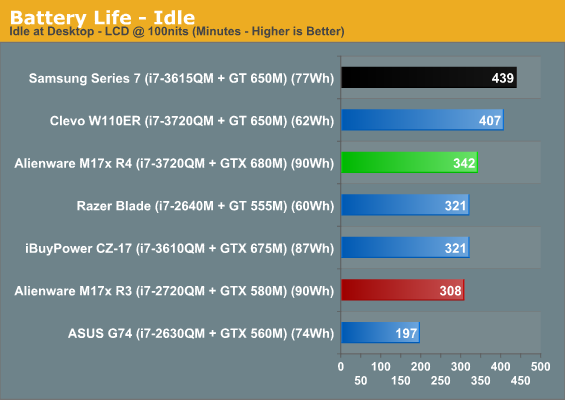
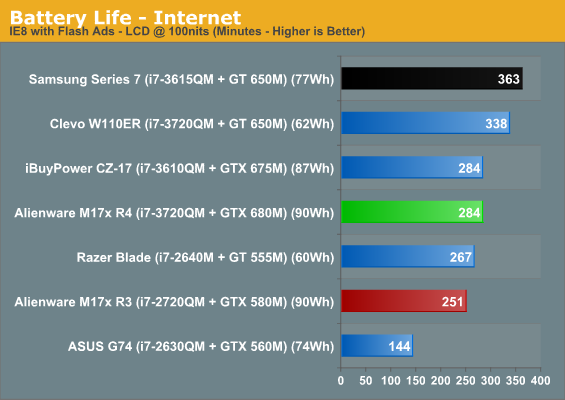

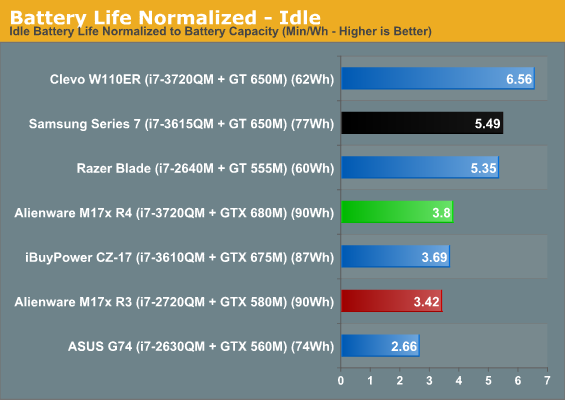
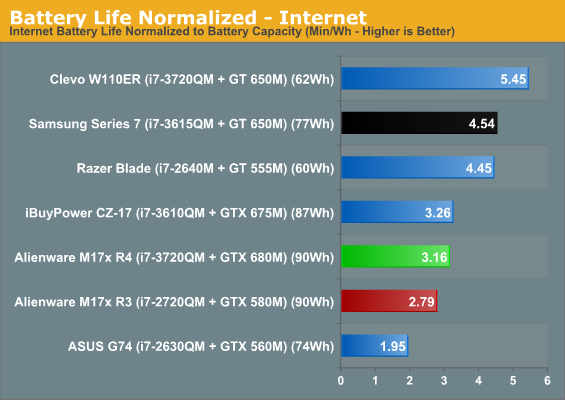
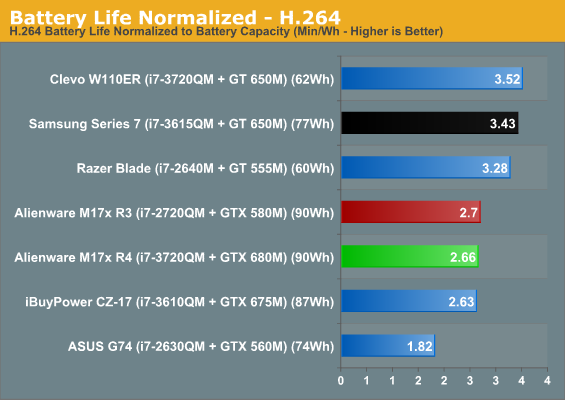
It's all pretty much as we expected. The lower power consumption of the Ivy Bridge CPU allows the M17x R4 to last just a little bit longer in most tasks than the R3 did, but differences between the notebooks really are negligible. Four or five hours of useful battery life from a nine pound land monster isn't too shabby.
Heat and Noise
Unfortunately, this is where things start to fall apart for the R4. Compared to the cooling system used in ASUS' gaming notebooks, the Alienware M17x R4's age really starts to show. The slightly thicker iBuyPower Valkyrie CZ-17 was able to do an admirable job of cooling the GF114-based GTX 675M while producing a lower pitched noise profile, but the R4 gets obnoxious in a hurry when gaming and in fact even seems to be a bit louder than the R3. The GTX 680M is rated for the same 100W TDP as the outgoing 580M/675M, but TDP ratings can often be deceiving, as the difference between the identically rated i7-2720QM and i7-3720QM can attest.
CPU-only loads don't seem to push the cooling system particularly hard, but that's no surprise. GPU-heavy loads cause the fan to spin up pretty substantially, though, and that can become obnoxious in a hurry. The reality is that other gaming notebooks are handling this aspect of design better these days.










61 Comments
View All Comments
raok7 - Thursday, September 5, 2013 - link
thanks for your complete details guys its lovely to know on such topics!!!!!http://www.jupiterelectronics.com/
http://www.steelrange.com/heavy-duty-racks.html
http://www.bajeria.com/
http://www.genesis-gifts.com/
http://www.opportune.in
http://www.fivebrosforgings.com/
http://www.aimaxprovider.com/index.php/magento-web...